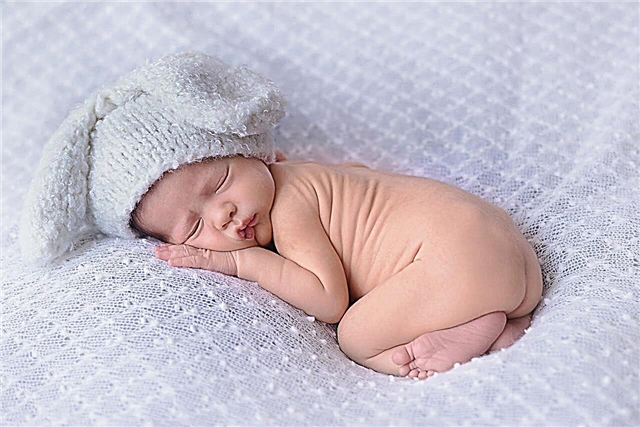Young mothers, arriving home with a newborn baby, begin to study it closely. Some are so afraid for the baby's health that they notice the smallest deviations that terrify them. It happens that the ears of a baby have a different shape and even differ in size. With age, they can change and become the same. However, in order to rule out pathology, it is better to consult a doctor.

Newborn
How the auricle is formed
The shape and size of the ears are transmitted genetically and are laid in the womb. As soon as the baby is born, parents begin to look for an external resemblance to themselves. By the shape of a newborn's ears, you can tell who the baby is more like: mom or dad.
Sometimes it happens that a deformity is found in a child. It is usually associated with fetal growth retardation. The fact that the newborn has different ears will be immediately noticeable. If parents do not pay attention to this in the hospital, then during the first month of life they will definitely see a similar feature in their baby.
Among the pathologies of the development of the auricle are:
- Macrotia, when the cartilage tissue grows strongly. As a result, the ear is large;
- Microtia. In this case, on the contrary, the auricle does not fully develop. It happens that it does not arise at all, and its complete absence is recorded;
- Lop-earedness. The ear is at an angle of at least 30 degrees to the head. There are cases when it is even placed perpendicularly;
- Lobe deformation. It can be double, fused with the head, in rare cases it does not form at all;
- Changing the shape of the curl of the auricle. In addition, it may not be there at all, or rudimentary formations will appear on it;
- The upper part of the ear is curved as if it were being folded.

Ear deformity
Why does a child have ears of different shapes
The reasons why a newborn has different ears include:
- Lack of a healthy lifestyle in a mother carrying a baby, in particular, bad habits, taking illegal medications, especially at the beginning of pregnancy;
- Incorrect position of the fetus in the womb, which is why the cartilage of the auricle is deformed;
- Fetal growth retardation, usually associated with a difficult pregnancy. Diabetes mellitus significantly aggravates the gestation period;
- Infectious diseases suffered by a woman while waiting for a child. The most dangerous are rubella, cytomegalovirus, toxoplasmosis, herpes, shingles. When carrying a baby, screening is carried out to exclude dangerous pathologies. Doctors recommend getting tested at the planning stage of pregnancy. It is especially dangerous if mom gets sick in the first trimester. During this period, excessive worries, strong emotional shock, even seasonal colds can affect the development of the baby extremely negatively. Therefore, a mother should take care of herself, remembering that the health of the future son or daughter depends on her well-being.
Genetic mutations, albeit in rare cases, can change the shape and size of a child's ears.
Is it worth worrying
Different ears in a newborn are usually not a cause for panic. They do not affect the child's hearing, especially his development. In rare cases, there are pathologies requiring surgical intervention. This is due to the fact that the auditory tube is partially or completely blocked, which affects the quality of life of the child.
If a newborn has different ears, this does not mean that they will remain so throughout life. Usually, with age, everything evens out, and the defect found at birth disappears. In any case, if the baby hears well that they are checking back in the maternity hospital, conducting audio screening, then you should not worry.

Audioscreening
Note! If the shape of the ears does not change by the age of 5, then plastic surgery can be performed. It has a purely aesthetic purpose, to make a boy or girl more attractive.
Features of genetics
When a newborn has a different shape of ears, most often it depends on the problems associated with the delay in fetal development. However, if the parents had deformities of the hearing organs, then there is a high probability that the child will encounter a similar pathology.
For example, they studied families with microtia and concluded that the risk of inherited transmission was 3 to 8 percent. Depends on whether both parents were diagnosed with partial formation of the auricle or one.
In favor of the opinion that genetic factors are in second place, says the fact that deviations in the development of the ears are often observed only in one of the twins born. Their shape and size are inherited. It was found that 49 genes are responsible for the formation of only the lobe. Therefore, it is impossible to find out what the baby's ears will be like in advance. Usually, if the parents have them small, then the child does not turn out to be large.
When surgical treatment is necessary
If a newborn has one ear larger than the other, then you need to find out if this affects the baby's hearing. When the doctor confirms that this is a kind of "highlight" that changes only the appearance of the child, then there is no need to carry out the operation. Although in most cases the procedure is carried out with a laser, it is considered quick and painless, it is better to wait - perhaps everything will return to normal on its own.
The need for surgery is usually associated with the development of microtia, when the child's hearing is significantly reduced. Doctors need to restore cartilage. The outer ear is made on an artificial frame or a natural material is used. In the latter case, the child's own cartilage is taken, namely the child's rib. Such operations are allowed to be carried out from 6 years old. It is already possible to recreate the ear artificially in a three-year-old baby.

Microtia
Note! There is a possibility to use a prosthesis that will act as an outer ear and will restore hearing. In this case, the baby does not have to undergo an operation, which in any case will bring stress to the body. The dentures are so comfortable and well-held that you can sleep with them and even swim with them.
Usually, parents turn to surgeons with a request to eliminate protruding ears. A similar procedure must be carried out up to 6 years, until the moment when the cartilage is fully formed. The best effect can be achieved at this age.
Young parents often worry about whether the shape of their babies' ears changes. They are afraid that their peers will laugh at the grown-up babies, and they begin to think about the operation plan. You can change the shape, usually this happens as the baby grows up without outside intervention. The main thing is that the baby's hearing does not suffer, which leads to some deformations.



